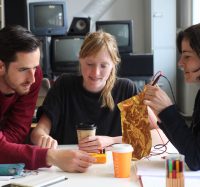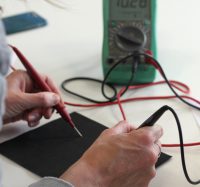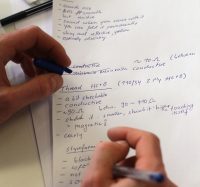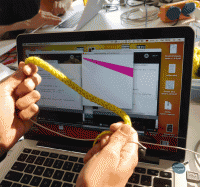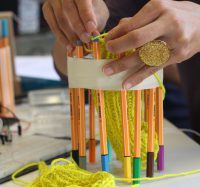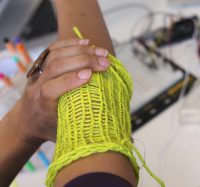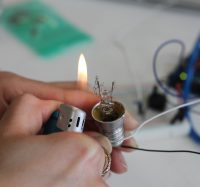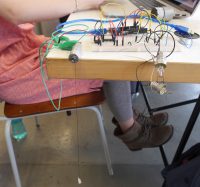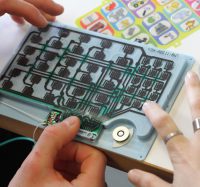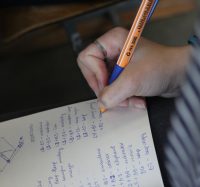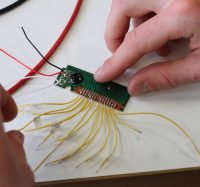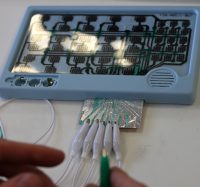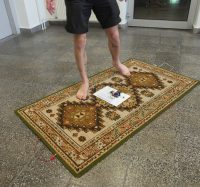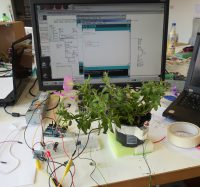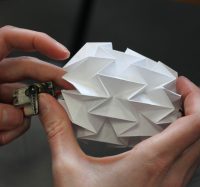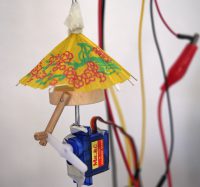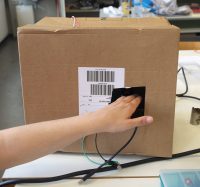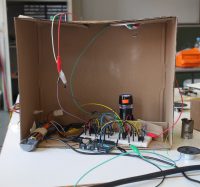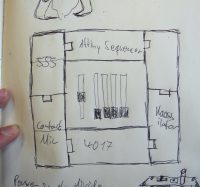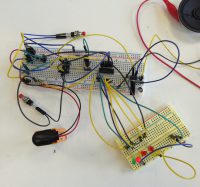Sensor Hacklab
Course
Bauhaus-Universität Weimar / 2016
Sensor Hacklab is a course that my friend Darsha Hewitt has been giving at the Bauhaus University in Weimar for the Media Art & Design students. In spring 2016 she was away from Weimar, so she asked if I could give the course, to which I happily agreed. Nine students with backgrounds ranging from photography to textile design and architecture participated in the course, which lasted three weekends. As the course focused on sensors, we experimented with different kinds of ready-made and DIY sensors using the Arduino microcontroller boards.
During the first weekend we learned some Arduino basics regarding reading sensors and making lights blink and speakers beep. After this we explored in small teams a mysterious pile of materials ranging from shiny yarns and fluffy wool to glittery sheets and foamy pieces. The task was to decipher with the help of multimeters whether the stuff was suitable for making a sensor and what kind of electrical properties it had. I had sneaked in some materials, which shimmered alluringly, but were of no use to sensors. However, the Bauhaus University students were not so easily fooled.
Sensor Hacklab is a course that my friend Darsha Hewitt has been giving at the Bauhaus University in Weimar for the Media Art & Design students. In spring 2016 she was away from Weimar, so she asked if I could give the course, to which I happily agreed. Nine students with backgrounds ranging from photography to textile design and architecture participated in the course, which lasted three weekends. As the course focused on sensors, we experimented with different kinds of ready-made and DIY sensors using the Arduino microcontroller boards.
During the first weekend we learned some Arduino basics regarding reading sensors and making lights blink and speakers beep. After this we explored in small teams a mysterious pile of materials ranging from shiny yarns and fluffy wool to glittery sheets and foamy pieces. The task was to decipher with the help of multimeters whether the stuff was suitable for making a sensor and what kind of electrical properties it had. I had sneaked in some materials, which shimmered alluringly, but were of no use to sensors. However, the Bauhaus University students were not so easily fooled.

